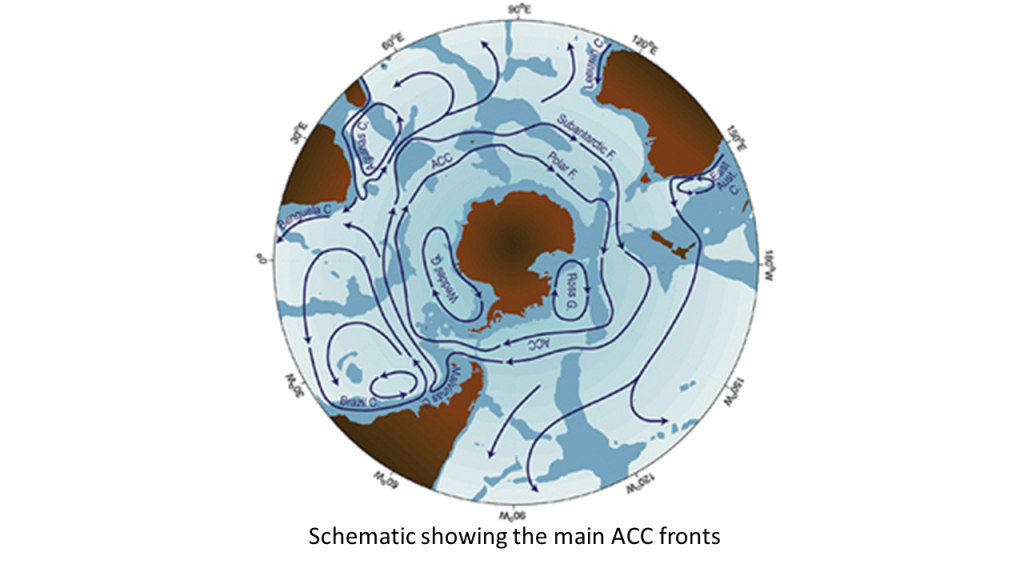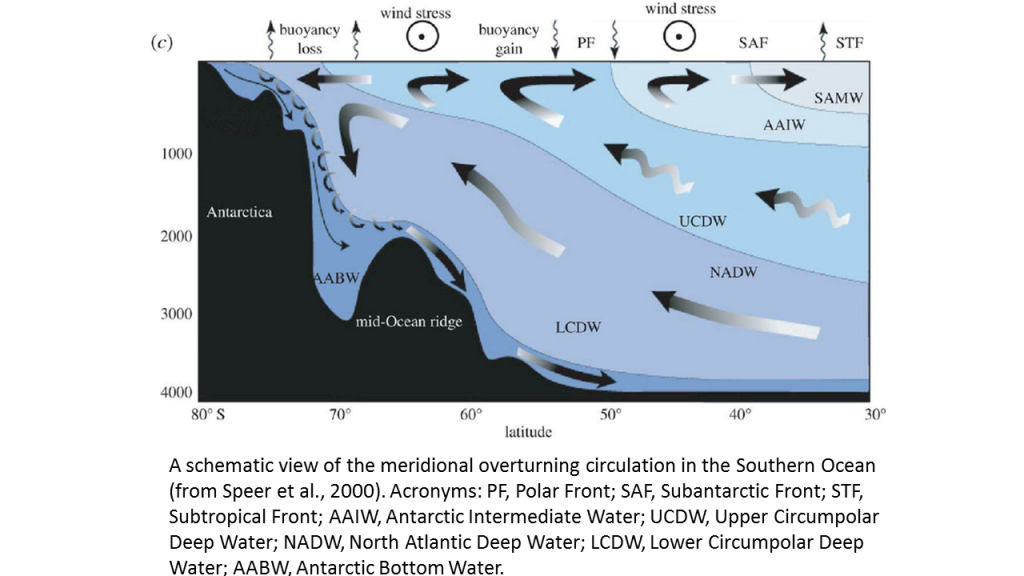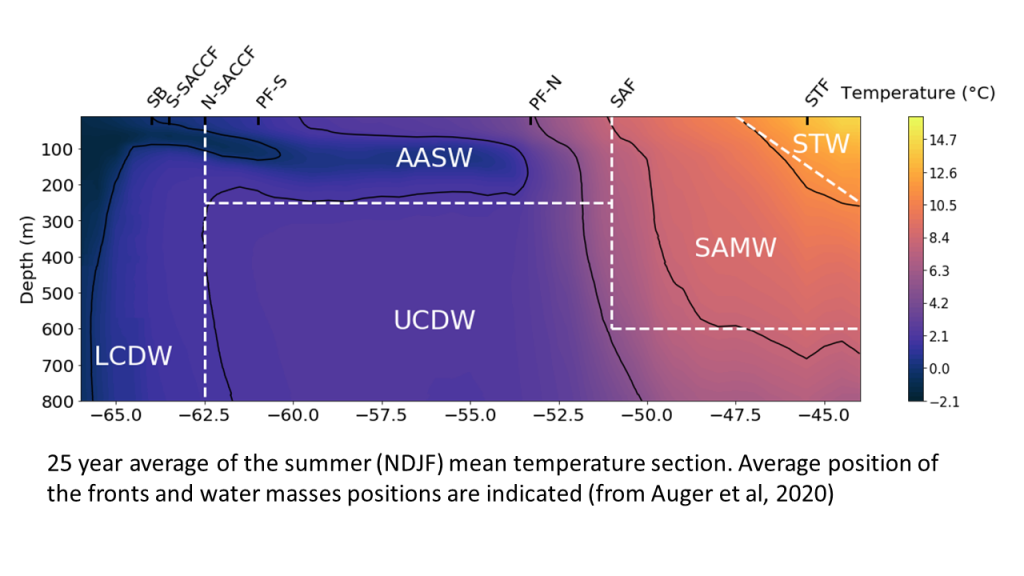Editors: R. MORROW & E. KESTENARE
The upper ocean between Tasmania and Antarctica is separated into different dynamical regimes. Just south of Tasmania, around 45°S, the ship crosses the Sub-Tropical Front (STF) which separates the warm and salty subtropical waters from the cooler waters to the south. Around 50°S it crosses the Sub-Antarctic Front (SAF) which has very sharp vertical gradients in temperature and salinity, and also has the strongest currents (this is the main axis of the Antarctic Circumpolar Current south of Tasmania).

Surface temperatures drop by around 11 to 5°C in 50 to 100 km across the SAF around 50°S. In between the STF and the SAF is the Sub-Antarctic Zone, where Sub-Antarctic Mode Waters (SAMW) form in winter. SAMWs are a large volume of water with a clear imprint of recent climate variations. This upper ocean water mass has cool, low salinity water which is well mixed down to 500-600 m in winter – in our summer sections this deeper, near-constant temperature is capped by a shallow and warmer surface layer.
South of around 52-53°S the ship crosses the Polar Front. This front marks the northern limit of a subsurface tongue of cold (0-2°C) low-salinity water formed by sea-ice melt water in winter. On all of the XBT sections south of here, there is a surface mixed layer around 2-5°C in the top 100 m (so-called « Antarctic Surface Water »), then this subsurface cold bump which is called « Winter water », then warmer and saltier water below the « Circumpolar Deep Water »). This continues from 53-63°S.
Close to the Antarctic continent, the ship passes the final front called the « Continental Water Boundary ». Here the temperature profiles become nearly constant with depth, between -1 to +1°C.

Although the basic characteristics of the temperature structure remain fairly stable during these summer transects, the whole system is actually moving in a complex 3-D way. There is strong zonal flow at each of the fronts, surface water plunges around the Sub-Antarctic Front and deep waters rise around 60°S. The minor temperature changes that scientists measure with this XBT project tell them a great deal about the frontal movements, the volume of water being warmed and cooled during summer, the interaction between the sea-ice and the ocean, and how climate perturbations in a particular year are propagated into the Southern Ocean.

